
DOHCEJ22E
-
Posts
38 -
Joined
-
Last visited
Content Type
Profiles
Forums
Gallery
Store
Posts posted by DOHCEJ22E
-
-
For future reference:
25D heads on a 251 block will make a nice running engine that WILL NOT blow head gaskets provided that the heads have been machined.
I'm running machined 25D heads on a 1995 22E block using thin MLS 222 gaskets & I've got 8K miles on it so far with no head gasket leaks.
If your mating surfaces are nicely machined, then there will be no gasket issues.
222s & 251 long blocks are compatible with each other & the cars they come out of but they aren't compatible with cars under 1999, which are Phase 1 EJs.
-
That snorkus ^ is a resonator that supposedly keeps air vibration down or something along those lines. It is located inside the fender near the front of the wheel well. I don't touch those at all.
-
Yes, the piston tops are different & come up over the deck of the block.
Whether it's a DOHC EJ22E (EJ22D) or a SOHC EJ25D (EJ25E), they will both become interference engines because of their head/piston combinations (& I think strokes.)
-
And in my case with fresh heads and a shot block, I'm not going to keep the crap and toss the good, if you know what I mean

Thank you for replying and you may see your info pop up in this thread.
Twitch
I know full well what you mean
 But if you're going to go with the 22E heads on the 25D block, make sure that the head & intake manifold ports are opened a little & matched so you can get maximum airflow. An intake spacer will definitely help (Grimmspeed makes them for the EJ22). Low end TQ FTW!!!
But if you're going to go with the 22E heads on the 25D block, make sure that the head & intake manifold ports are opened a little & matched so you can get maximum airflow. An intake spacer will definitely help (Grimmspeed makes them for the EJ22). Low end TQ FTW!!! -
I have done this.
My hybrid build is a 22E block with 25D heads bolted onto it.
I estimate the power at something like 150bhp although it might actually be closer to 145-140bhp.
The engine's cylinder still had an unbelievably nice hone at 100K & there is now 1500 extra miles on that block in hybrid form.
I chose the 22E block despite it's lower compression because it's really much tougher than the 25D has been proven to be.
Power isn't completely unlivable & it's actually VERY fuel efficient (my scan tool picks up 33mpg overall & 25mpg when I'm traveling around 75mph without cruise control).
The 25D would probably be as tough if it were generally maintained right but even so, it does not have forged rods (big minus) & it's cylinder walls are thinner.
I had a 25D block.
I don't miss it a single bit.
-
Nice work! Just out of curiosity, why didn't you just drop the entire 2.2 into the car? It would have bolted and plugged right in and run without issues.
The 22E long block I got from the bone yard came off a MT Legacy & did not have the EGR valve needed. On top of that, it was some weird ultra high emission engine from california & it had one extra plug that didn't go into anywhere on the car harness, but the other 3 plugs matched up just fine.
-
dude....awesome. im from west hartford and i grew up in manchester.... in fact i work in east windsor @ south windsor auto parts!
nice to see another person from ct here.
nice build and i love the look of your car

i have a 95 legacy wagon in which i am going to turbo at some point.... i have 2 turbos sitting around waiting to be rebuilt lol
we have subaru parts at my job so in case your looking for something let me know

Thanks! Yeah, about 2 months ago, I was searching for a 22E but I had to drive all the way out to Colchester for my short block. If I had known about you, I'd have gone to South Windsor & picked one up there! It's good that I know about you now though because I will be coming to you for parts. I'm up in Rockville, which is only like 10-15 mins away!
-
Current mods are:
Grimmspeed Phenolic Intake Manifold Spacer.
Aftermarket eBay UEL headers.
Custom welded midpipe.
2.5 to 3 inch WRX catback (connected to stock cats by custom midpipe).
Tomei Timing Belt Guide.
There will definitely be more coming!
-
Low end TQ is better on a SOHC 22E but a DOHC 22E has more power in the midrange rpms. The DOHC heads move a lot more air & you can feel that as you pass 3K rpm. I added phenolic intake spacers to help a little more with the intake but those heads have a lot of room for improvement. I'm pretty sure that if the intake manifold & intake side of the heads were ground away & port matched to match the intake manifold gasket, there will definitely be a small power gain.
As for the "personality" of this engine, the DOHC heads take the power & TQ of the EJ22E & push it up higher in the RPM range. You lose power & TQ from the 25D block but you gain it in that same midrange area where the SOHC 22E is lacking. The 97-98 22Es & the phase 2 222 have even better N/A power (the latter of which i used for my first DOHC EJ22 experiment.) I do it because 1; 25D blocks suck (usually due to having been overheated from head gasket leaking, which shortens the life of the internal bearings dramatically), 2; They're a lot more expensive than a 22E will ever be, & 3; finding a GOOD one that hasn't overheatead is hard as opposed to the 22E, which there are still more of & has been proven to be a workhorse.
As for the transmission, it shifts just about flawlessly, even after having not been used for almost a whole year. The 4.44 FGR really helps for this engine on the hilly streets of Rockville & w/acceleration. Now onto the final compression ratio, which is mostly determined by the thickness of the head gasket & head CCs. The 97-99 DOHC heads have 46 CCs & have a "clover" design like what's on the 205 heads, which I personally think is best for this kind of hybrid.
As you can tell from my picture, when I overlap the gasket on the head, there are no sealing issues. The chamber is completely enclosed in the bore of the gasket. 1996 EJ25D Hydraulic Heads (pair) - Ultimate Subaru Message Board <- This here shows that the 25D heads of 1996 are cut to match the bore of the 99.5mm block, which means that they cannot be used on any 2.2L EJ (22E/T/2) but there are Japanese versions of these heads that can be used as they are for the 2.0. However, if you used the 96 heads on the 97-99 25D blocks, compression ratio should be reduced & would make for a turbo friendly block (depending on the thickness of MLS head gaskets used). Likewise, using 97-99 heads on a 96 block should raise the compression ratio (again, depending on head gasket thickness).
<- The DOHC EJ22E running as smooth as can be. No head gasket leaks. No popped rods. Nothing. Just excellent heads on an excellent block. Subaru should have made these things from the factory back in those days (w/turbo of course!)Completely unrelated note: I have gotten this insane urge to grind away my intake ports on the heads & intake manifold to match the gasket exactly. Knowing how much material can be shaved away is starting to dig a hole in my brain...
Log: (8-17-12)
I drove 54 miles today & plugged my scanner up to the OBDII port to have it consistently record 30.5mpg highway & 24-26mpg in mixed street driving. The car is definitely a little lazy below 2500-3000rpms but nothing that really bothers me. I took it through the winding roads in Willington & went a little hard on it. After I install the "Sport" mode, the transmission will take better advantage of the engine's TQ.
This engine has a totally different & very enjoyable personality when you keep it above 3Krpms & toss it around a bit. The power is there & its always available, never dropping as long as my foot is in command. The only things the kept me from really putting it to work are the tires (they feel like mush) & my worn struts/shocks (coilovers sound great about now).
I've noticed that the oil is very clean when I pulled the dipstick, which means that the blue Subie filter is doing its job well. I was always told that the blue filters were no good & always stuck with Mobil 1 but the blue filters are even better than that, I think. I'll be sticking with it from now on. I really want to see the true potential of this particular engine & though decent it may be, I will be saving up for turbo money.
Night:
The 22E running as smooth as can be. I am actually eager to make another one of these engines now that I know they're actually pretty easy to build. My next GT (wagon) will have one for sure since they make excellent cruisers. For my future Outback or SUS, I want to do a 22E head swap (w/port work) on a 251/253 block.
-
Low end TQ is better on a SOHC 22E but a DOHC 22E has more power in the midrange rpms. The DOHC heads move a lot more air & you can feel that as you pass 3K rpm. I added phenolic intake spacers to help a little more with the intake but those heads have a lot of room for improvement. I'm pretty sure that if the intake manifold & intake side of the heads were ground away & port matched to match the intake manifold gasket, there will definitely be a small power gain.
As for the "personality" of this engine, the DOHC heads take the power & TQ of the EJ22E & push it up higher in the RPM range. You lose power & TQ from the 25D block but you gain it in that same midrange area where the SOHC 22E is lacking. The 97-98 22Es & the phase 2 222 have even better N/A power (the latter of which i used for my first DOHC EJ22 experiment.) I do it because 1; 25D blocks suck (usually due to having been overheated from head gasket leaking, which shortens the life of the internal bearings dramatically), 2; They're a lot more expensive than a 22E will ever be, & 3; finding a GOOD one that hasn't overheatead is hard as opposed to the 22E, which there are still more of & has been proven to be a workhorse. However, I will not completely bash the 25D though because if you can find one that hasn't overheated constantly in some way, you will have an engine equal in reliability to an EJ22.
As for the transmission, it shifts just about flawlessly, even after having not been used for almost a whole year. The 4.44 FGR really helps for this engine on the hilly streets of Rockville & w/acceleration. Now onto the final compression ratio, which is mostly determined by the thickness of the head gasket & head CCs. The 97-99 DOHC heads have 46 CCs & have a "clover" design like what's on the 205 heads, which I personally think is best for this kind of hybrid.
As you can tell from my picture, when I overlap the gasket on the head, there are no sealing issues. The chamber is completely enclosed in the bore of the gasket. 1996 EJ25D Hydraulic Heads (pair) - Ultimate Subaru Message Board <- This here shows that the 25D heads of 1996 are cut to match the bore of the 99.5mm block, which means that they cannot be used on any 2.2L EJ (22E/T/2) but there are Japanese versions of these heads that can be used as they are for the 2.0. However, if you used the 96 heads on the 97-99 25D blocks, compression ratio should be reduced & would make for a turbo friendly block (depending on the thickness of MLS head gaskets used). Likewise, using 97-99 heads on a 96 block should raise the compressio ratio (again, depending on head gasket thickness).
<- The DOHC EJ22E running as smooth as can be. No head gasket leaks. No popped rods. Nothing. Just excellent heads on an excellent block. Subaru should have made these things from the factory back in those days (w/turbo of course!)Completely unrelated note: I have gotten this insane urge to grind away my intake ports on the heads & intake manifold to match the gasket exactly. Knowing how much material can be shaved away is starting to dig a hole in my brain...
-
I have an intake manifold spacer on my frankenstein. To install one in general, you have to cut the EGR valve pipe behind the left head & extend it a little more than the length of the spacer.
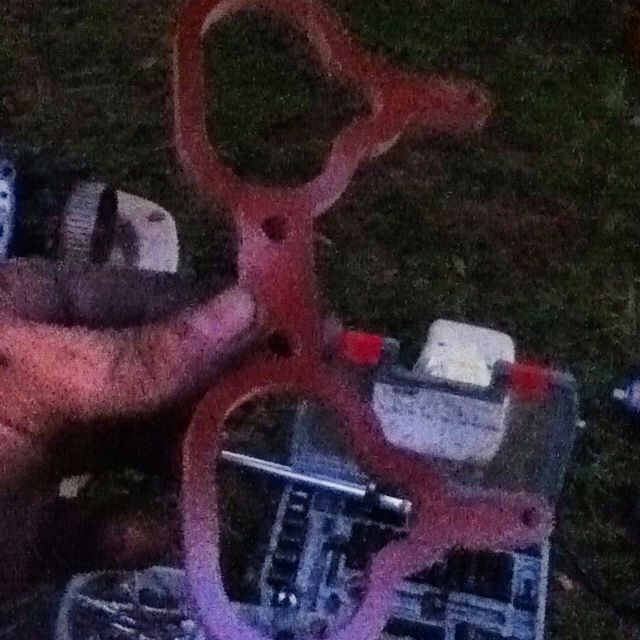
This next pic is a demonstration of how 22E MLS gaskets look on the 25D heads. As you can see, the chamber is completely enclosed in the bore of the gasket.
 If you put together a DOHC EJ22E, assemble it as you would a 25D & use the 25D head bolts (22E bolts are too long), oil dipstick (25D dipstick has a higher mounting point), & black coolant pipe (22E pipe will NOT fit around the left DOHC head.)
If you put together a DOHC EJ22E, assemble it as you would a 25D & use the 25D head bolts (22E bolts are too long), oil dipstick (25D dipstick has a higher mounting point), & black coolant pipe (22E pipe will NOT fit around the left DOHC head.)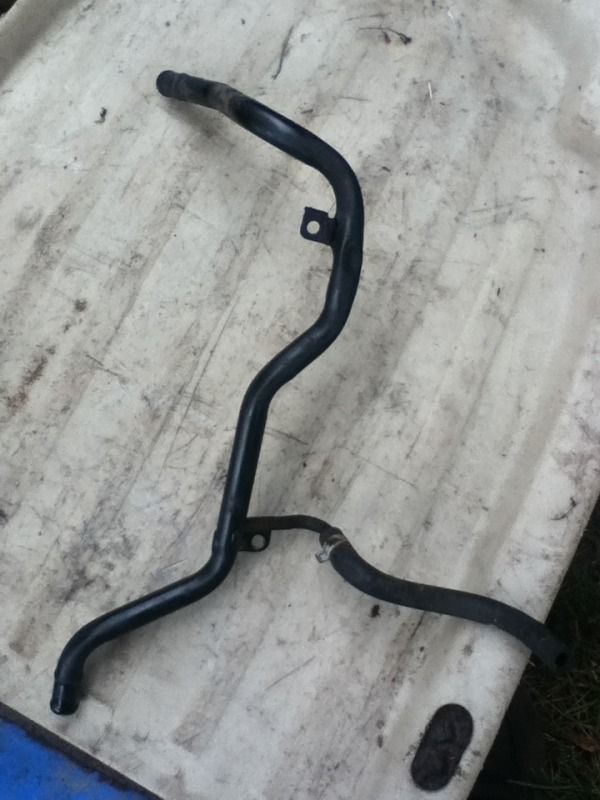
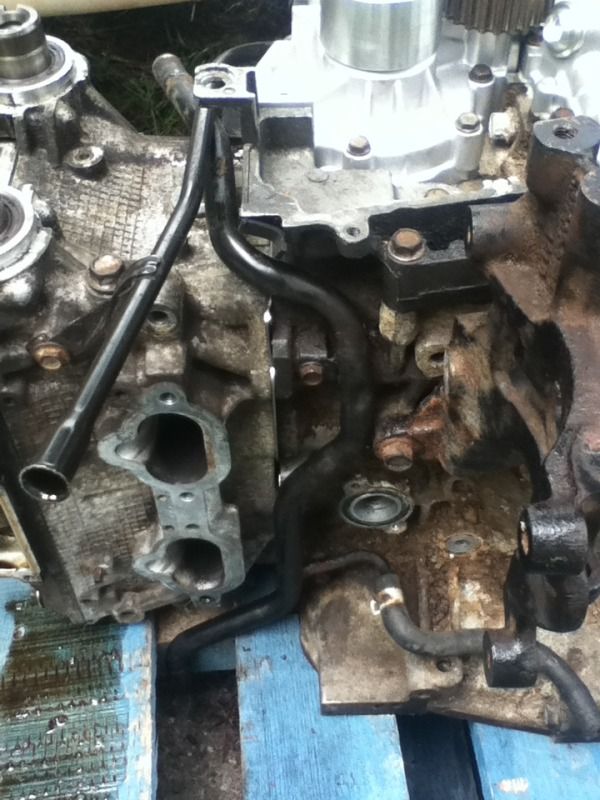
Follow the factory service manual for the 25D to reassemble everything & make sure bolts & screws go back in their exact same spot. The end result will look just like a 25D.
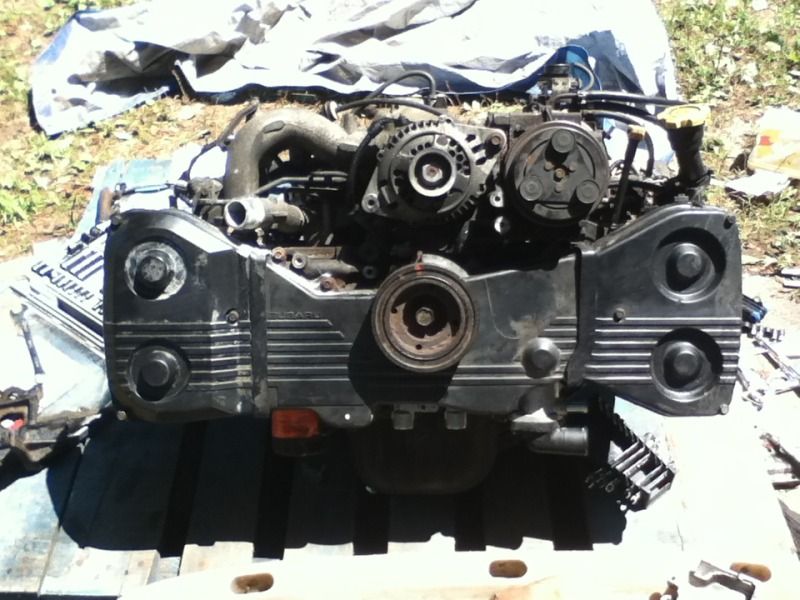
If there are any questions, I'll answer them to the best I can. Btw, the final compression ratio I calculated with this particular engine was 8.8:1, which should be somewhat decent until I add a turbocharging kit. To anyone wondering if our pistons come up over the deck, yes, they do.
-
Hello everyone, my name is Ken & I am an owner of a 1998 Subaru Legacy GT Limited with a recently installed & perfectly running DOHC EJ22E. I've had a lot of people tell me in the past that putting DOHC heads on a 22E would not work out well and/or would be too weak to be of any good use. I'm going to challenge some of those words right now by with this thread. I had created a DOHC EJ222 once before this thread but that car was sold long ago. I guess my hybrid can be called the "EJ22D"! Hahaha!
I'll get to the point now. Late last year, my 25D crapped out on me on my way to an internship & Rod #3 punched a hole through the block. Not wanting to risk this happening again, I sought out a 22E block, having had 2 EJ22s before this one, so I know personally how tough they can be. I found one & began my hybrid build. I'm going to tell you right now that this engine is a little strong than a regular 22E in the midrange RPMs but most of the low-end TQ the SOHC 22E has is lost in this build. However, fuel efficiency is good with this engine & it pulls very decently for what it is on the highway (I outran a SOHC 2.2L Impreza on a long & empty straight road). Now onto the build... (My pics may be a bit crude as I had to dismantle the engine completely before I can remove it from the engine bay.)
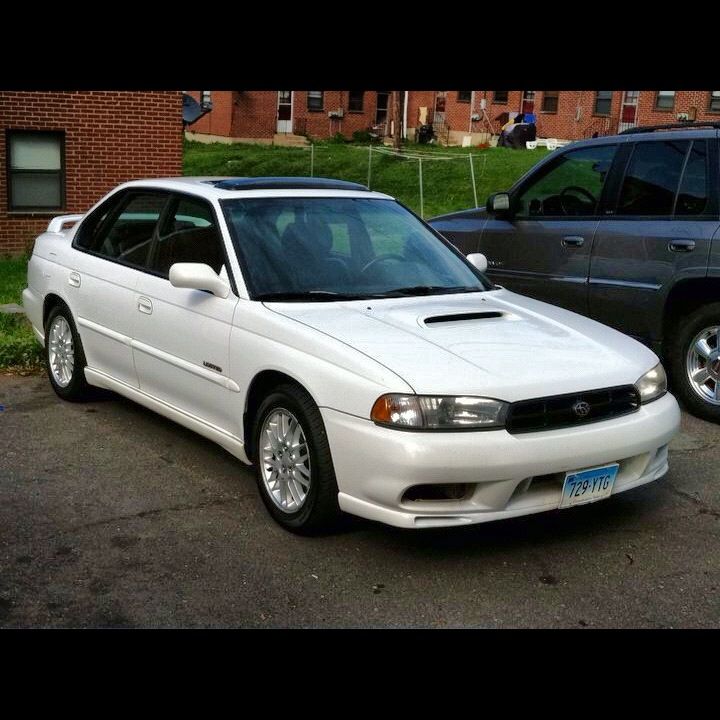

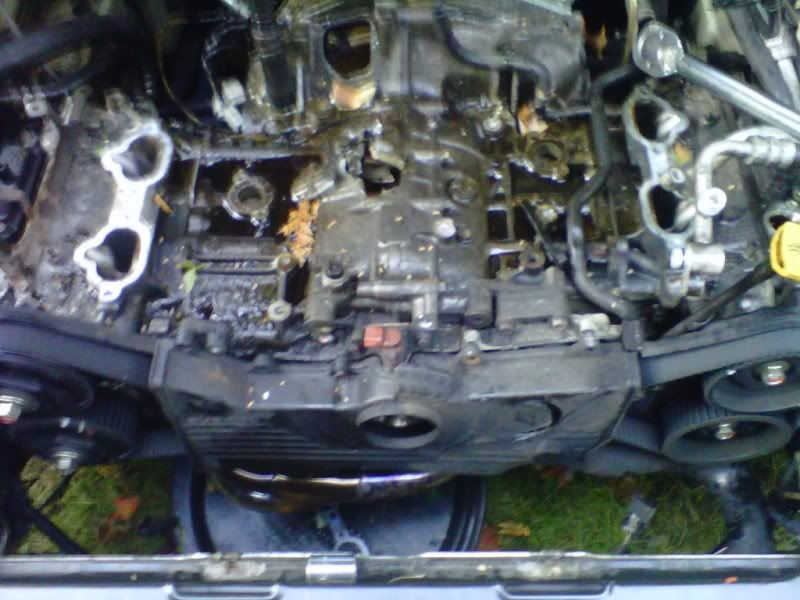
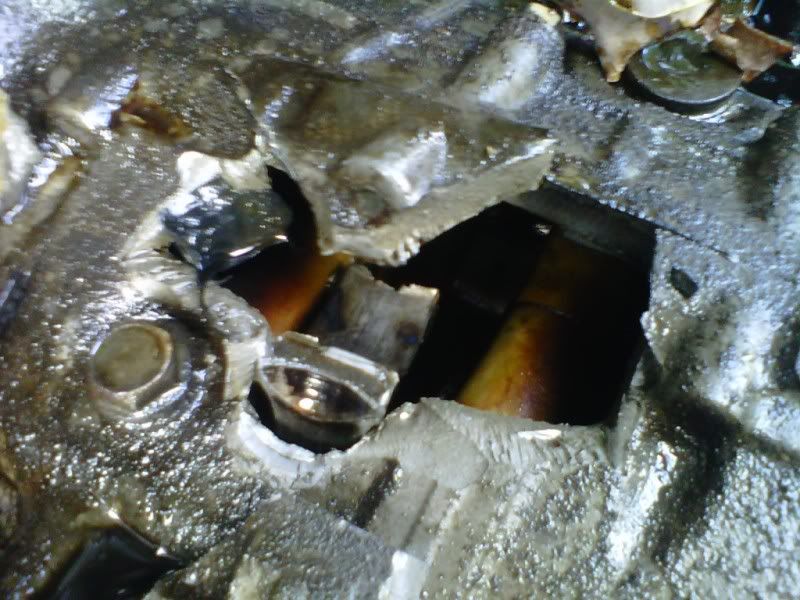
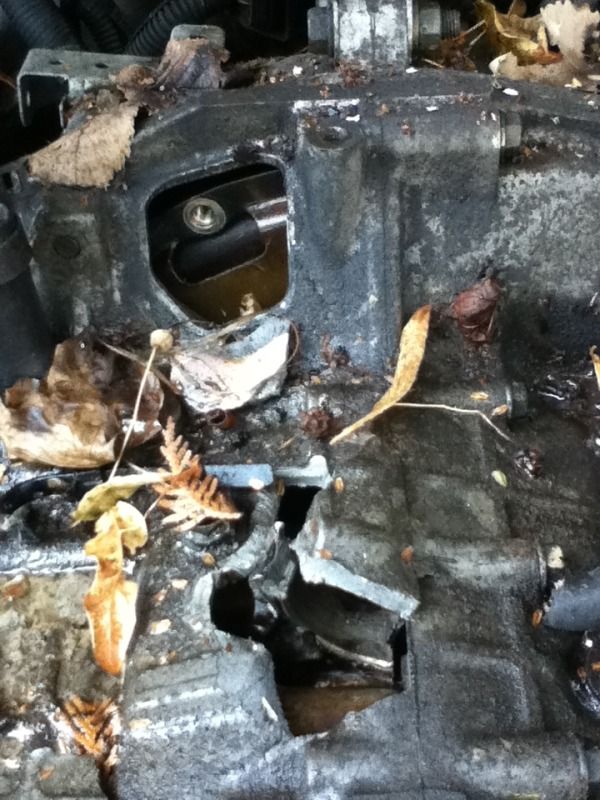
This is my second time making one of these & so far, it turned out good. I still have yet to start it due to waiting on tomorrow for my paycheck, then I'll be able to buy the fluids needed to start it up. For now, I'm gonna' feed your eyes with some pictures. (People, whenever you work on engines, keep your bolts/nuts/screws together in bags (label the bags) so that they don't get lost & keep in mind that it is imperative that they go back EXACTLY WHERE THEY CAME FROM.)
When I first got it, it looked like this...
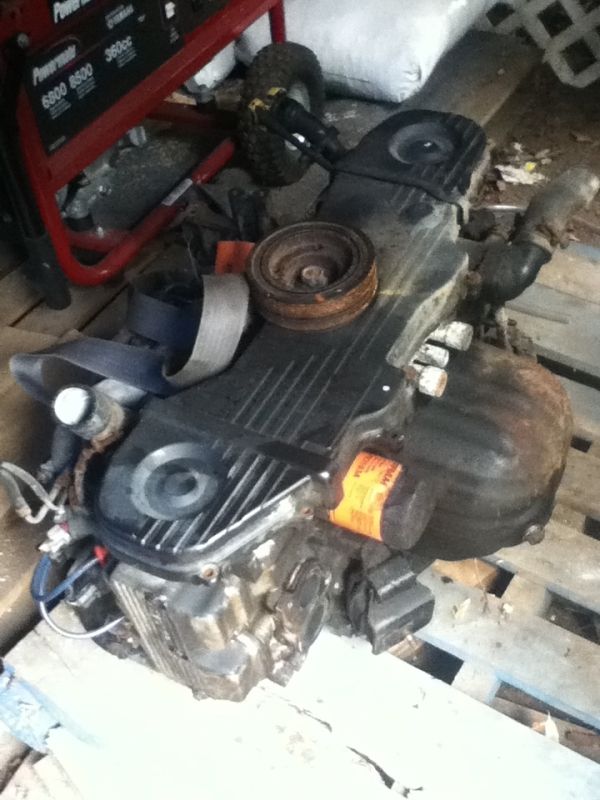
After a few minutes of examining it closely, I began to take it apart.
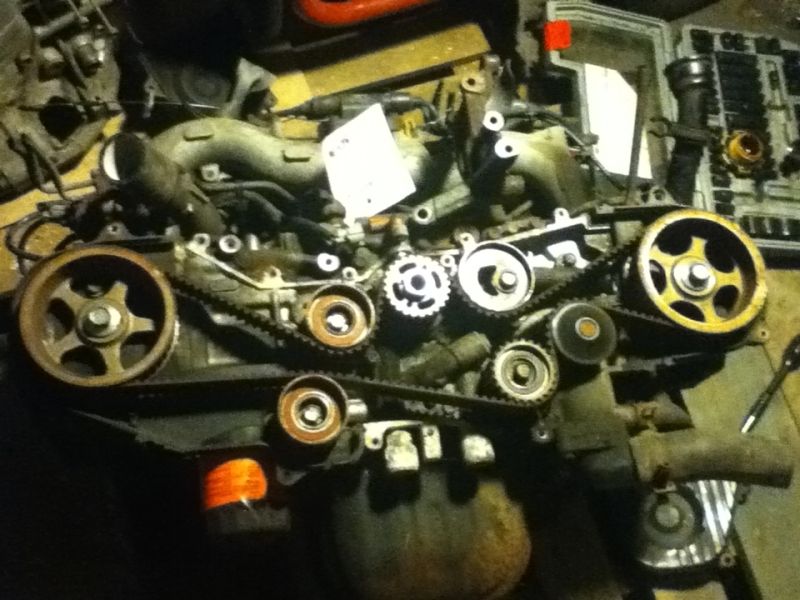
This engine was said to be a 1995. This pic confirms it.
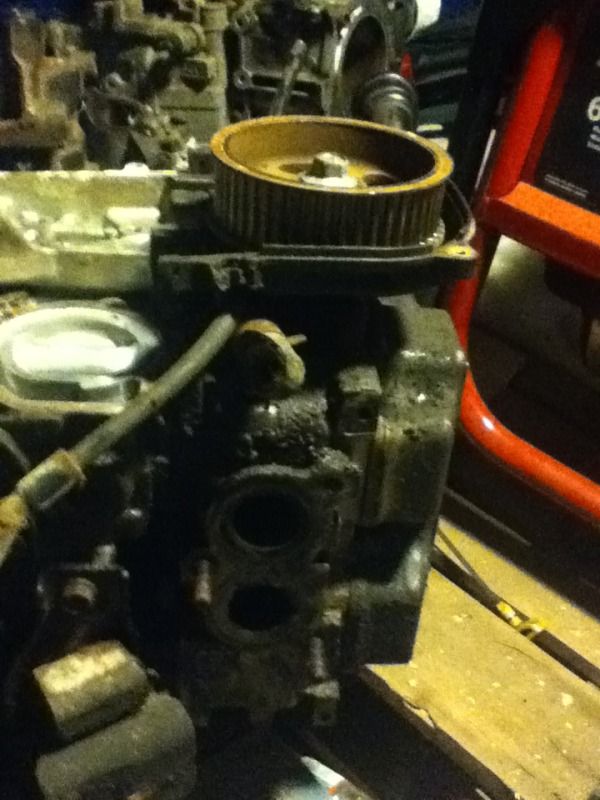
After more time, I removed the intake & all of the smaller things bolted or screwed to the engine & began to remove the cylinder heads. (Follow the service manual removal procedures for the intake & cylinder heads.)
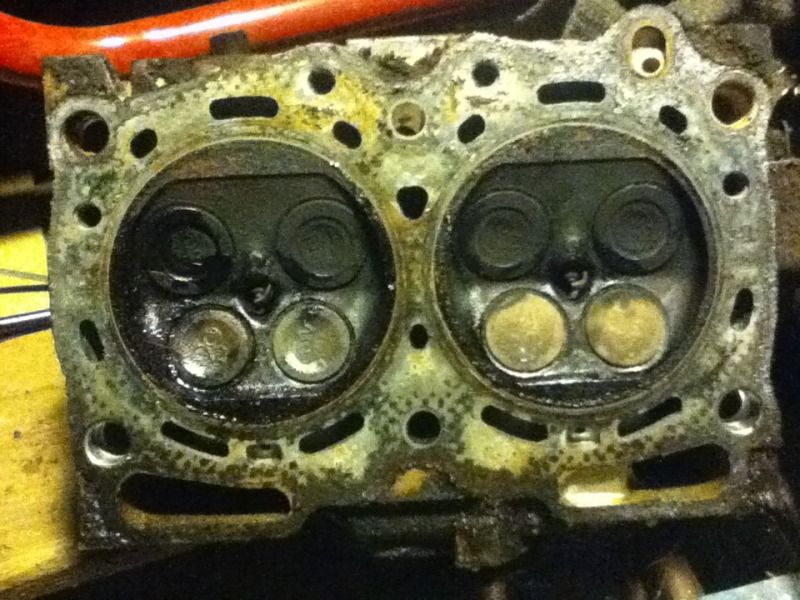
These must be the old style head gaskets...
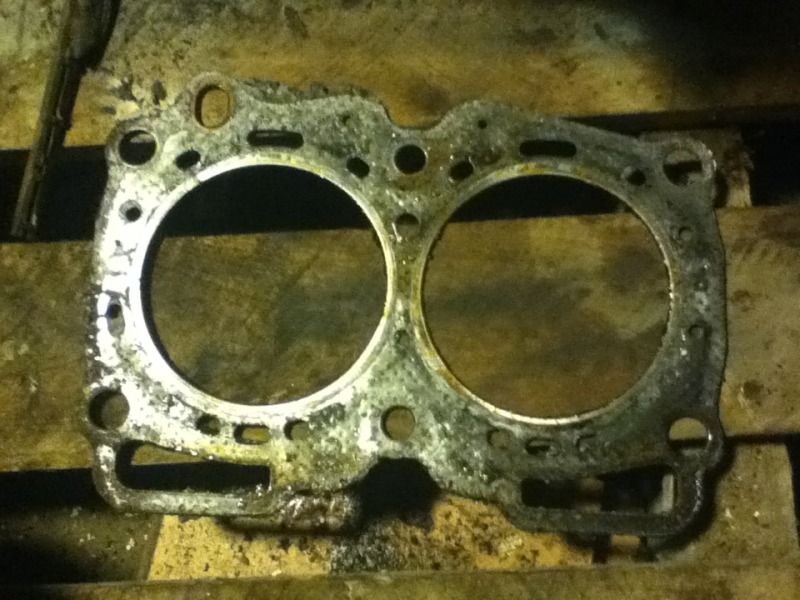
I like the way that my new ones look a lot better plus they had a solid plate of steel in the middle of each gasket so I KNOW these will not be leaking.

For those of you wondering if the 22E/25D intakes can be swapped, no, they cannot. They have completely different bolt patterns. If you use the 25D heads, you must use the 25D intake & wiring harness. (25D bolt pattern below).
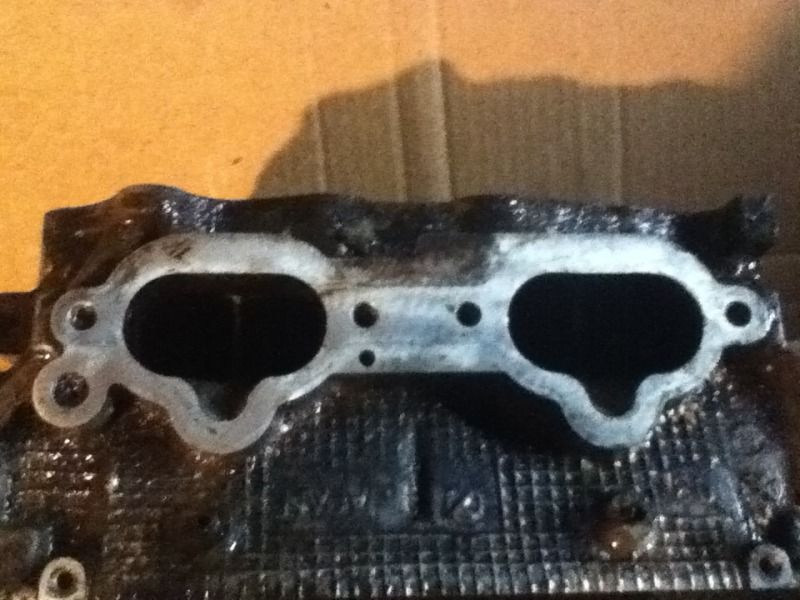
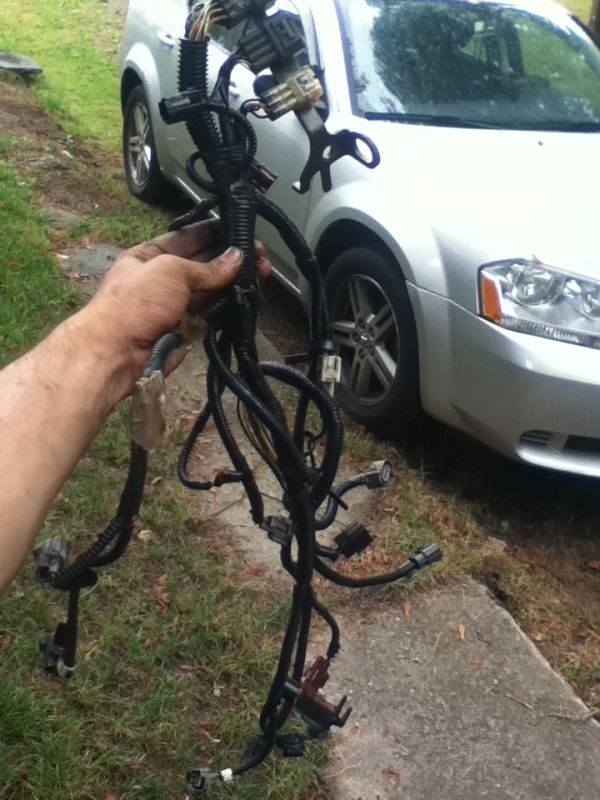
The older style & newer style timing belt tensioners & their back plates are completely different. If you use the new style, you must use the plate that it bolts into. (Replace the tensioner if it is used).
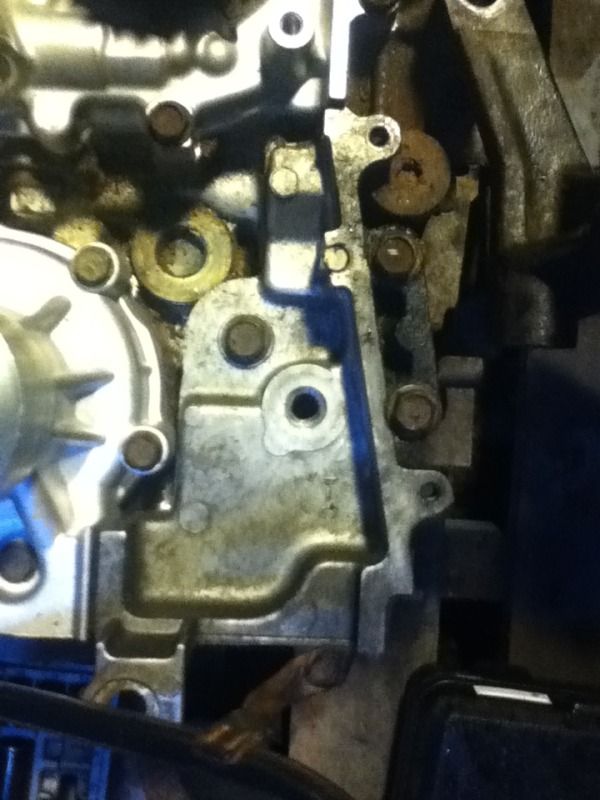
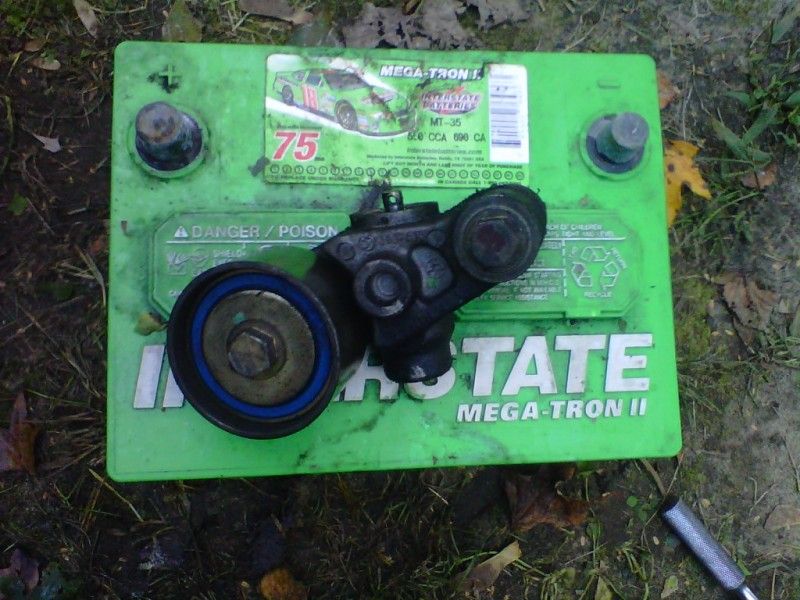
There were changes to the EJ22E during it's run from the cylinder heads to the piston crowns. The top is the 1995 piston crown & the bottom is the 1998 piston crown.

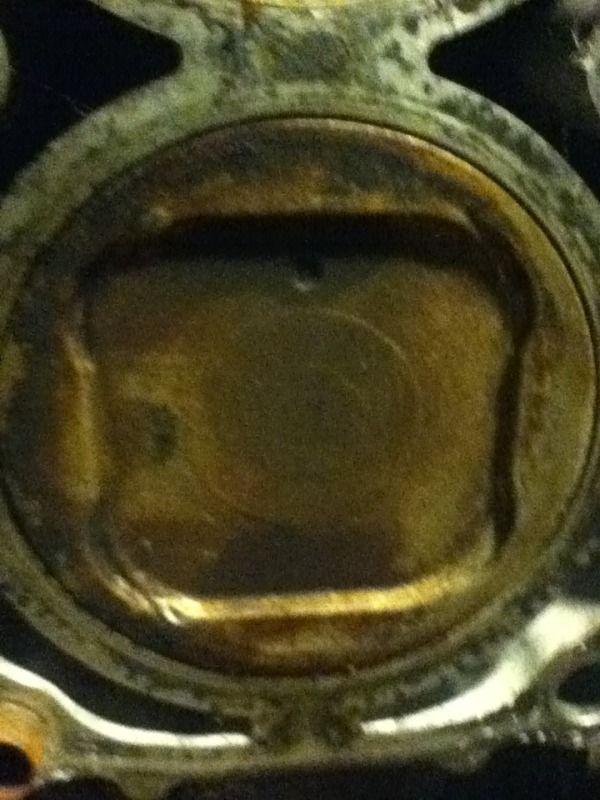
I believe that it doesn't hurt to have an 11mm oil pump for this kind of frankenstein since it will be run hard a few times once I break it in. Btw, the crank gear slides right out with no difficulty. If you do experience a little resistance, it's most likely corrosion & you'll have to put some penetration oil on it. Be patient if you have to do that. Btw, 22E & 25D crank & cam sensors are the same.

On our autos, there are 4 12mm bolts holding the flexplate on the torque converter. DO NOT REMOVE THE TORQUE CONVERTER. Turn the crank to access the 4 bolts & remove them (turn them counter clockwise).
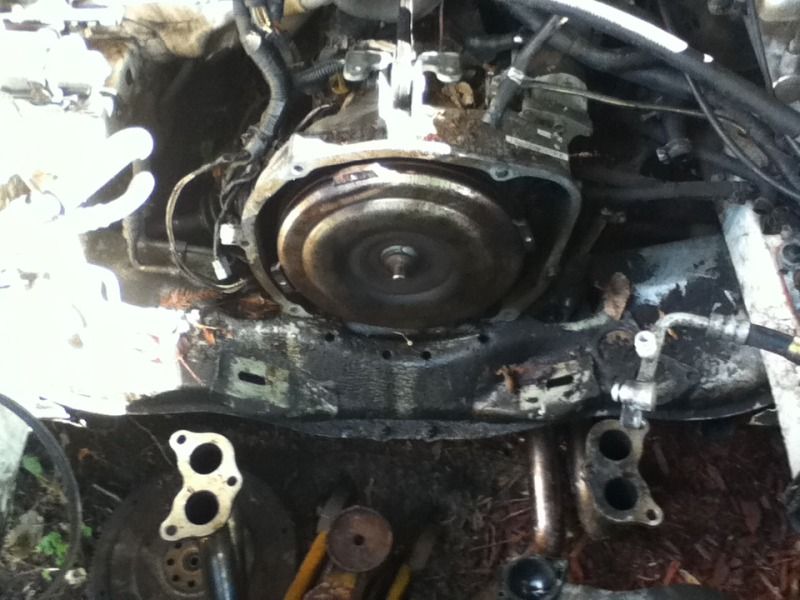
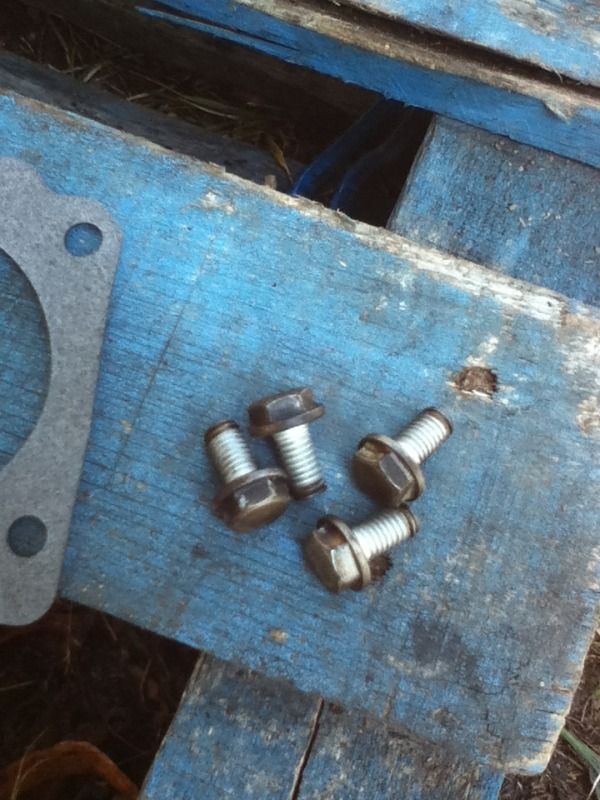
Btw, DO NOT FORGET to replace the seals when you have everything apart. This goes for the rear main seal & resealing the oil separator behind the flywheel/flexplate. If you have an older EJ, it most likely has the plastic cover. Replace it with the upgraded metal cover.
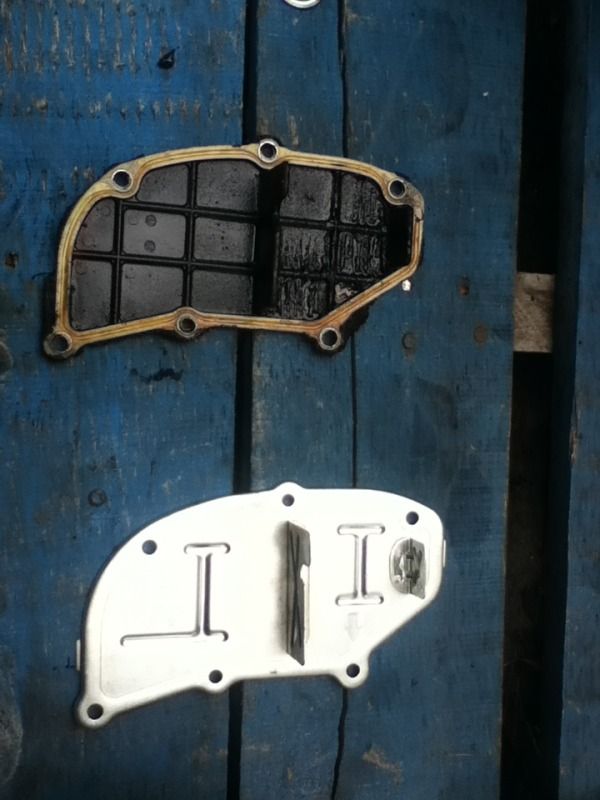

Just a EJ22 thought and request.
in 1990 to Present Legacy, Impreza, Outback, Forester, Baja, WRX&WrxSTI, SVX
Posted
The reason why people don't prefer the EJ25D in the present is because of all the head gaskets the ones in the past went through.

They pop head gaskets like Pringles & when they do, the internals become compromised due to the acidic oil/coolant mixture.
So even if you DO fix the head gasket problem, now you have to worry about a rod popping through the block, which happened to me.
Observe.
Happened to me in 2011, even after the previous owner replaced the head gasket.
I've replaced the block with a 1995 EJ22E & it hasn't given me a single issue, aside from the usual light piston slap the EJ22 is known for, during the entire 20k miles I've been driving it.
The compression ratio is at 9.5:1 & it has a little more kick than the regular 22E in the midrange rpms, but not quite as much as the 25D, which I can definitely live with.